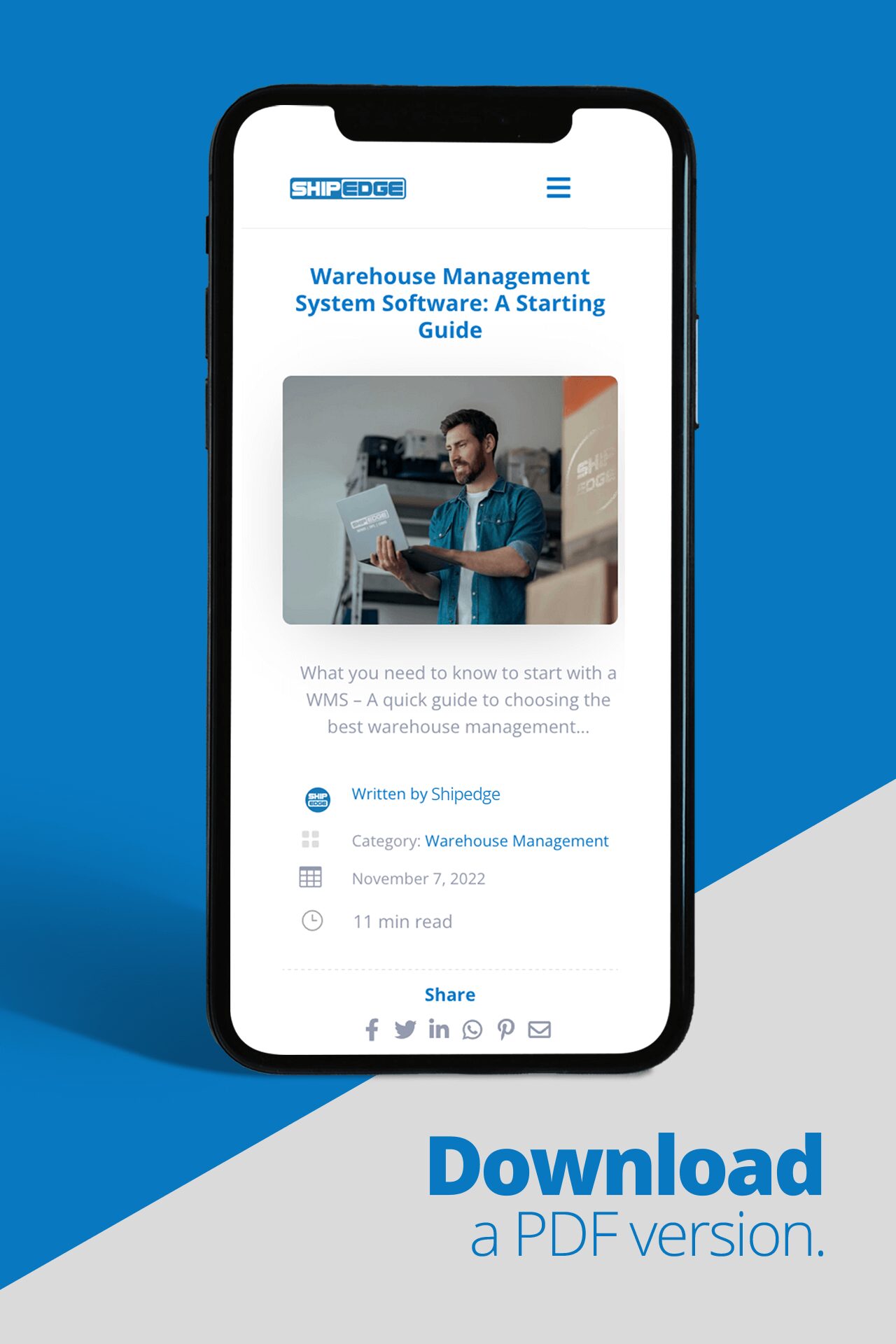E-commerce is constantly growing, and competition levels are higher than ever. One of the greatest challenges brands face is finding effective solutions that guarantee customer satisfaction to maintain relevancy in their market. This process requires the implementation of effective supply chain management and logistics operations, and often time e-commerce brands will rely on a 3PL for this. All product orders and goods go through a series of operational processes, which entails a long journey from arrival to the warehouse to the hands of the customer.
Two vital roles in the supply chain are first and last-mile logistics. This article introduces the respective definitions of first-mile logistics and last-mile logistics. Additionally, we will explore the significant challenges that 3PLs are facing and the strategies they use to overcome them.
Below are the central ideas surrounding first and last-mile logistics, definitions, challenges, and solutions to those strategies.
What is First-Mile Logistics?
First-mile logistics is the transportation of products from a seller to getting the product to the consumer, and can also involve the assembly of materials.
The main goal of first-mile logistics is to provide an optimal solution to the customers’ needs within different timelines. The proper execution of first-mile tracking and management of variables in logistics, transportation, and inventory process will provide complete visibility of this stage, leading to better results during the final part of the delivery and greater customer satisfaction. However, every day there are several challenges to face when it comes to first-mile logistics. Some of these challenges are listed in the next topic below.
READ MORE: Seven Vital Warehouse Software Features for e-commerce Warehouses
Four Common Challenges of First-Mile Logistics
1. Poor Focus on First-Mile Experience
Over the last few years, the concept of first-mile logistics has largely been overlooked, with the focus being placed on last-mile logistics to provide customers with better experiences. More recently, however, first-time logistics faced significant challenges. 3PLs must recognize the importance of providing customers with end-to-end visibility into the delivery process and optimize logistics costs by giving equal importance to the first mile. This requires 3PLs to implement robust first-mile tracking tools that optimize first-mile costs and provide end-to-end visibility into delivery operations.
2. Inefficient Labeling Techniques
Labeling may seem like a minor aspect of first-mile logistics, but it is a crucial component of first-mile delivery. Many 3PLs still manually label packages today, resulting in incomplete fields, which may cause dispatching to be ineffective and prone to delays. This problem is rapidly solved by automating dispatching, a crucial component of last-mile tracking technology.
3. Improper Packaging
In the rush to deliver orders quickly, packaging is frequently overlooked as an area of improvement. Standard packaging materials and cartons are used regardless of the item being shipped. This can cause delays in the freight forwarding process and result in material damage in the first mile. By using cutting-edge tools like cartonization, your packing processes will be improved, and the risk of products being damaged in the first mile is significantly reduced. You may also notice a decrease in overall costs by using the proper packaging.
READ MORE: How to Ship More for Less: Cartonizatinization & Best Rate Shipping
4. Lack of Visibility
A significant issue that ultimately affects not only mid-mile but also last-mile procedures and the end-user experience is poor visibility of first-mile operations. Poor handling, en route delays, ineffective tracking of freight flow from a warehouse to a hub, and other factors are some of the main consequences of poor visibility.
Discover how our WMS can improve your business
Now that we have met the meaning of first-mile logistics let’s find out the meaning of last-mile logistics in the next topic.
What is Last-Mile Logistics?
Last-mile logistics is the final step of the delivery process, from a distribution center to the end consumer. Last-mile operations are complete once the order has been delivered. The goal of last-mile logistics is to deliver packages as cost-effectively, quickly, and accurately as possible.
Like first-mile logistics, last-mile logistics also face various issues and challenges, four of which are summarized in the next topic.

Four Common Challenges of Last-Mile Logistics
1. Managing Delivery Delays
Late deliveries and missed delivery dates can quickly become expensive. Amazon may even ban or suspend your seller account for missing delivery dates when a customer orders from Amazon Prime. Delays in international shipping are typically cheaper to deal with and easier to predict, but when it comes to last-mile delivery, rigorous route planning and delay avoidance via a dispersed distribution network and real-time communication are your best bets.
If extremely delayed deliveries are expected, it may be wise to cancel delivery orders as they come to avoid unsuccessful orders. It’s important to manage customer expectations and potential fines or penalties for late deliveries.
2. Rising Costs
Although the last mile of the delivery process is the shortest, it is typically the most expensive for both the customer and the company shipping the goods. Integrating new infrastructure to manage an increase in demand may be costly, and there may be unanticipated costs associated with delivery, such as delays or order cancellations.
Offloading these costs onto the customer is not a great idea, as unexpected costs may lead customers to abandon their shopping carts. Instead, the best course of action would be to spread out and reduce these expenses.
3. Unexpected Problems
When it comes to large-scale operations, unexpected problems are bound to arise. Industry experts who frequently deal with local and long-distance transportation concerns recommend creating a contingency fund to budget adequate time and money to handle any unforeseen issues. The exact amount may vary based on how many difficulties have previously been experienced.
4. Inadequate Routes
Optimizing your routes is one of the easiest ways to save operational costs for last-mile delivery. This offers the advantage of speeding up delivery and increasing customer satisfaction. Companies without a shipping or logistics background may find it challenging to consider the various factors that affect route planning.
In this article, we’ve presented the meaning of first and last-mile logistics. We understand that optimizing those steps is essential to ensure the best quality delivery service from the goods entering the warehouse until they come to the consumer. To do that in the best quality service, there are some strategies that 3PL can implement in their business to lead with that. In the next topic, we will present some of them.
Strategies to Overcome Common Challenges
Some strategies implemented by companies to face the main difficulties of challenges of first and last-mile logistics are:
Diversifying Carriers
Having a range of carriers like UPS, DHL, USPS, FedEx, etc, allows 3PLs to deliver packages faster, improving customer satisfaction by reducing response time.
Centralizing Inventory Management
With an omnichannel fulfillment system, 3PLS can easily control all inventory paths from a centralized platform. This enables factors such as direct communication with stores and visibility on products that have yet to be stored.
Optimized Order Fulfillment Process
With streamlined order processing, efficient picking and packing, and providing real-time updates, 3PLs are given the opportunity to better control order fulfillment.
Discover how our WMS can improve your business
Now that we have delved into the meaning of first and last-mile logistics, we will invite you to visit our blog to learn more about the importance of technology, including Warehouse Management Systems for every company that operates online with e-commerce.
Feel free to reach out at any time on our social media with any questions, comments, or concerns!
Discover how our WMS can improve your business









0 Comments